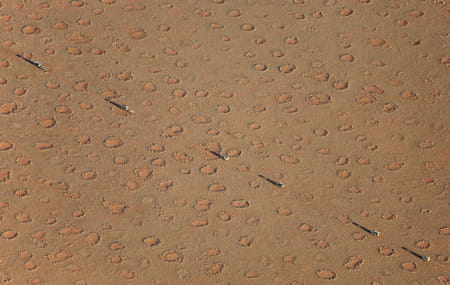They are found in no less than 15 countries and on three different continents. Their origin is beginning to be known.
They have intrigued scientists for several decades and the answer may be close at hand. Even their name arouses curiosity: “fairy circles”, as they have been nicknamed, have been reported on several continents in recent years and the latest investigations, which required the precious help of satellites, have revealed a very more important than we supposed.
From Namibia to Australia, these little-known plant formations have been seen from space. These strange phenomena can take the appearance of circles or hexagons. To list them and better study them, a team of Spanish researchers created the first world atlas aimed at recording the appearance of these “fairy circles”. The verdict surprised them since no less than 263 areas of fairy circles were discovered. Surprise, they are found in no less than 15 countries and on three different continents, from Africa to Oceania via Asia.
Far from Namibia where they were discovered for the first time, these mysterious circles also extend, for example, to the Sahara, the Horn of Africa, Madagascar, the Australian desert but also in South and Western Asia. ‘West. Everywhere, the same landscape intrigues scientists: a cluster of almost perfect circles and hexagons. Each circle is composed of thin vegetation. In their center as around them, the landscape remains dry and lunar before being followed a few meters further by other circles. These geometric shapes can reach from 2 to more than 10 meters in diameter.

The latest discoveries have made it possible to identify common points between the regions which shelter them. Each time these are arid regions, with sandy soil, irregular rainfall and very rare presence of water. The subsoil of all these areas was also studied. We also find a common point here: a low nutrient content. But that doesn’t solve the main question. How are these circles formed?
The question of the origin of these circles actually remains controversial. Meteorite shower, presence of gas or natural radioactivity… These numerous avenues have already been ruled out. Conversely, some researchers assure that termites play a decisive role in their creation and point out that each of the identified areas is home to known populations of termites.
Other researchers reject this hypothesis and evoke a biological phenomenon with self-organization and defense mechanisms. The circles would form or disappear depending on the level of precipitation. The new findings have not yet settled the debate. However, one thing is certain: these fairy circles play a key role in arid ecosystems by increasing the productivity of vegetation in these inhospitable areas.
